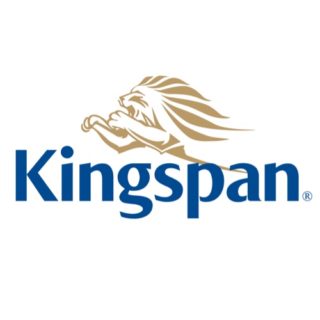Report: Wall systems with the lowest embodied carbon
New research looks at four different industrial claddings
Assessing the embodied carbon of materials is challenging for the AEC sector. A report from AIA partner Kingspan aims to help architects make more informed choices.

As buildings become more operationally efficient, the AEC sector is increasingly considering the impact of building materials on the carbon footprint of the built environment. According to Architecture 2030, embodied carbon emissions from the building sector produce 11% of annual global greenhouse gas (GHG) emissions and will be responsible for almost half of total new construction emissions by 2050. To reduce embodied carbon, architects and designers will need to assess the environmental impact of building material selections and deliver low carbon buildings to help fight the extreme impacts of climate change.
While energy-efficient design remains one of the key strategies for decarbonizing buildings, prioritizing sustainable building material selection is also critical to reducing embodied carbon in construction. In fact, decisions related to materials selection provide the only opportunity to reduce embodied carbon before a building is constructed.
Assessing the embodied carbon of materials is challenging for the AEC sector as data evaluating the carbon footprint of construction materials is limited. That is beginning to change. A report released by Kingspan Insulated Panels earlier this year provides data aimed at helping building owners and architects make more informed choices when it comes to reducing embodied carbon in commercial and industrial buildings.
The report, based on research conducted by architectural research and planning firm KieranTimberlake, focuses on embodied carbon and how materials regularly used in commercial and industrial building construction measure up when put to the test.
The firm performed a life cycle assessment (LCA) of four different industrial claddings—mineral fiber insulated metal panels, insulated concrete, tilt-up concrete, and Kingspan QuadCore insulated metal panels—to understand the embodied carbon impact of each of the different wall systems.
The four variations of wall systems were used on a virtual 150,000-square-foot industrial warehouse in Philadelphia to determine the environmental impacts of structure, envelope, and interior assemblies over a 60-year building life. The study used an R-value of 20, based on the building code climate zone for the area. The full cradle-to-grave analysis focused on material manufacturing, maintenance, replacement, and end-of-life.
To conduct the study, KieranTimberlake compared 2.5-inch-thick Kingspan KS Series panels utilizing the company’s QuadCore technology to 5-inch-thick mineral fiber IMPs, 12-inch-thick insulated concrete walls utilizing polystyrene insulation, and 9-inch-thick tilt-up concrete walls insulated with fiberglass batts. The doors, windows, roofing, and floor slab were kept the same across all materials. However, the wall assembly, vertical structure, and foundations varied for the different applications.
KieranTimberlake utilized Tally, a Revit-integrated LCA tool that quantifies and analyzes carbon locked in building materials, to generate a complete bill of materials for each type of assembly, assessing each for their impact on global warming, acidification, eutrophication, smog formation, ozone depletion, and nonrenewable energy demand.
The LCA comparison of embodied carbon, measured as global warming potential, revealed that the Kingspan QuadCore insulated metal panels had the lowest levels of all the wall assemblies—28% lower than both the insulated concrete wall and tilt-up concrete wall, which registered the highest levels of embodied carbon. That reduction in embodied carbon for the single building scenario studied is the equivalent of removing the greenhouse gas emissions from the average car driving 27 times around the world or the CO2 emissions from burning 149 tons of coal.
“Studies show that embodied carbon alone is responsible for 11% of global greenhouse gas emissions. This analysis shows how switching out just one material can make a world of difference,” said Brent Trenga, director of sustainability for Kingspan Insulated Panels. “The effort to reduce the carbon footprint of a building starts with the selection of materials and making more informed choices. We only get one chance to cut embodied carbon when designing a new building.”
The stakes are high. If efforts to reduce embodied carbon emissions are not stepped up, climate goals will not be met. According to the Global Alliance for Building and Construction, “to get the buildings sector on track to achieving net-zero carbon by 2050, all actors across the buildings’ value chain need to increase decarbonization actions and their impact by a factor of five.”
Prioritizing sustainable building material choices during the design process and implementing low-carbon building practices will have a significant and lasting impact on the global fight against climate change.
AIA does not sponsor or endorse any enterprise, whether public or private, operated for profit. Further, no AIA officer, director, committee member, or employee, or any of its component organizations in his or her official capacity, is permitted to approve, sponsor, endorse, or do anything that may be deemed or construed to be an approval, sponsorship, or endorsement of any material of construction or any method or manner of handling, using, distributing, or dealing in any material or product.

